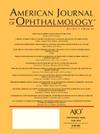胰高血糖素样肽-1受体激动剂与视神经和视网膜不良事件的关联:一项基于180个国家人群的观察性研究
IF 4.1
1区 医学
Q1 OPHTHALMOLOGY
引用次数: 0
摘要
目的胰高血糖素样肽-1受体激动剂(GLP-1 RAs)是治疗2型糖尿病和肥胖症的重要选择;然而,对眼科安全的担忧仍然存在。本研究探讨了GLP-1 RAs与眼部不良事件(ae)之间的关系。设计全球观察性药物警戒研究。方法:我们检索了美国FAERS数据库(通过OpenVigil 2.1)和世卫组织的VigiBase(通过VigiAccess),检索了与西马鲁肽和替西肽相关的视神经和视网膜ae,涵盖了从各自的批准日期(西马鲁肽为2017年12月,替西肽为2022年5月)到2024年9月的期间。在FAERS中,比较了所有其他药物,而在VigiBase中,二甲双胍、恩格列净、杜拉鲁肽和胰岛素作为对照。歧化指标包括95%置信区间的报告优势比(RORs)。结果在FAERS中,西马鲁肽和替西帕肽分别占76444例(0.59%)和118639例(0.34%),分别占12936341例和35000000例。Semaglutide显示缺血性视神经病变(ION)的发生率显著升高(FAERS: ROR=11.12, 95%CI=8.15-15.16;VigiBase: ROR=68.58, 95%CI=16.75-280.67),糖尿病视网膜病变(DR) (FAERS: ROR=17.28, 95%CI=13.62-21.91;VigiBase: ROR=7.81, 95%CI=5.60-10.90),以及视网膜/玻璃体脱离、视网膜/玻璃体出血和视网膜撕裂(FAERS: ROR=2.44-5.89, 95%CI=1.70-8.97,均p<0.001, IC025=0.49)。VigiBase:与二甲双胍相比,ROR=5.49 ~ 20.91, 95%CI=2.71 ~ 90.11,均p≤0.0001,IC025≥0.53)。VigiBase的特点是黄斑水肿(ROR=3.87, 95%CI=1.89-7.92)、黄斑孔(ROR=20.90, 95%CI=2.65-165.01)和乳头水肿(ROR=6.97, 95%CI=2.53-19.17)(与二甲双胍相比,所有p≤0.004,IC025≥0.27)。恩格列净和杜拉鲁肽的敏感性分析显示,与ION和DR有显著相关性,而与杜拉鲁肽相比,玻璃体脱离和出血显著。此外,当使用胰岛素作为比较物时,semaglutide对ION的ROR更高(ROR=9.84, 95%CI=4.25-22.81, P<0.0001, IC025=0.42)。然而,替西帕肽仅与FAERS患者的DR显著相关。鉴于西马鲁肽的广泛使用,其与眼部不良反应的相关性突出了全球药物警戒和上市后监测的必要性。本文章由计算机程序翻译,如有差异,请以英文原文为准。
Association of Glucagon-like Peptide-1 Receptor Agonists with Optic Nerve and Retinal Adverse Events: A Population-Based Observational Study Across 180 Countries.
PURPOSE
Glucagon-like peptide-1 receptor agonists (GLP-1 RAs) are important therapeutic options for type 2 diabetes and obesity; however, concerns about ophthalmic safety persist. This study examined associations between GLP-1 RAs and ocular adverse events (AEs).
DESIGN
Global observational pharmacovigilance study.
METHODS
We searched the US FAERS database (via OpenVigil 2.1) and WHO's VigiBase (via VigiAccess) for optic nerve and retinal AEs associated with semaglutide and tirzepatide, covering the period from their respective approval dates-December 2017 for semaglutide and May 2022 for tirzepatide-through September 2024. In FAERS, all other drugs were compared, while in VigiBase, metformin, empagliflozin, dulaglutide, and insulin served as controls. Disproportionality metrics included reporting odds ratios (RORs) with 95% confidence intervals.
RESULTS
Semaglutide and tirzepatide accounted for 76,444 cases (0.59%) in FAERS (n=12,936,341) and 118,639 cases (0.34%) in VigiBase (n>35,000,000). Semaglutide showed significantly higher odds of ischemic optic neuropathy (ION) (FAERS: ROR=11.12, 95%CI=8.15-15.16; VigiBase: ROR=68.58, 95%CI=16.75-280.67), diabetic retinopathy (DR) (FAERS: ROR=17.28, 95%CI=13.62-21.91; VigiBase: ROR=7.81, 95%CI=5.60-10.90), as well as retinal/vitreous detachment, retinal/vitreous hemorrhage, and retinal tear (FAERS: ROR=2.44-5.89, 95%CI=1.70-8.97, all p<0.001, IC025=0.49, compared to all other drugs. VigiBase: ROR=5.49-20.91, 95%CI=2.71-90.11, all p≤0.0001, IC025≥0.53, compared to metformin). Unique to VigiBase were macular edema (ROR=3.87, 95%CI=1.89-7.92), macular hole (ROR=20.90, 95%CI=2.65-165.01), and papilledema (ROR=6.97, 95%CI=2.53-19.17) (all p≤0.004, IC025≥0.27, compared to metformin). Sensitivity analyses using empagliflozin and dulaglutide revealed significant associations with ION and DR, while vitreous detachment and hemorrhage were significant when compared to dulaglutide. Additionally, when insulin was used as a comparator, semaglutide showed a higher ROR for ION (ROR=9.84, 95%CI=4.25-22.81, P<0.0001, IC025=0.42). However, tirzepatide was only significantly associated with DR in FAERS.
CONCLUSIONS
Given the widespread use of semaglutide, its association with ocular AEs highlight the need for global pharmacovigilance and post-marketing surveillance.
求助全文
通过发布文献求助,成功后即可免费获取论文全文。
去求助
来源期刊
CiteScore
9.20
自引率
7.10%
发文量
406
审稿时长
36 days
期刊介绍:
The American Journal of Ophthalmology is a peer-reviewed, scientific publication that welcomes the submission of original, previously unpublished manuscripts directed to ophthalmologists and visual science specialists describing clinical investigations, clinical observations, and clinically relevant laboratory investigations. Published monthly since 1884, the full text of the American Journal of Ophthalmology and supplementary material are also presented online at www.AJO.com and on ScienceDirect.
The American Journal of Ophthalmology publishes Full-Length Articles, Perspectives, Editorials, Correspondences, Books Reports and Announcements. Brief Reports and Case Reports are no longer published. We recommend submitting Brief Reports and Case Reports to our companion publication, the American Journal of Ophthalmology Case Reports.
Manuscripts are accepted with the understanding that they have not been and will not be published elsewhere substantially in any format, and that there are no ethical problems with the content or data collection. Authors may be requested to produce the data upon which the manuscript is based and to answer expeditiously any questions about the manuscript or its authors.

 求助内容:
求助内容: 应助结果提醒方式:
应助结果提醒方式:


